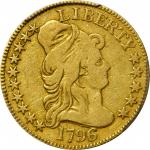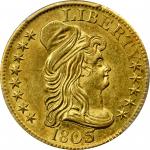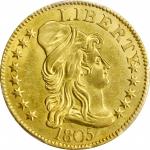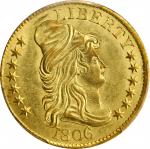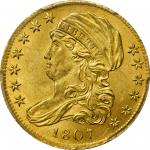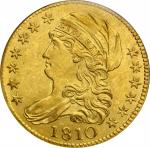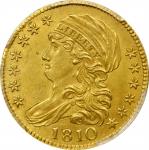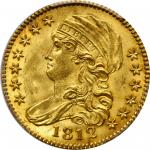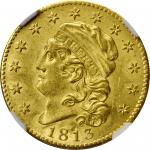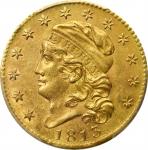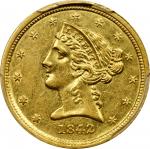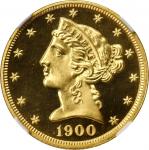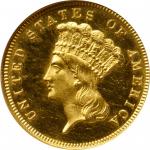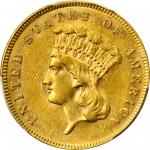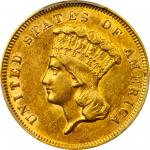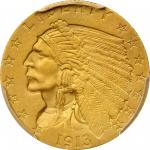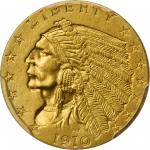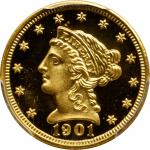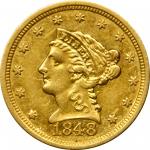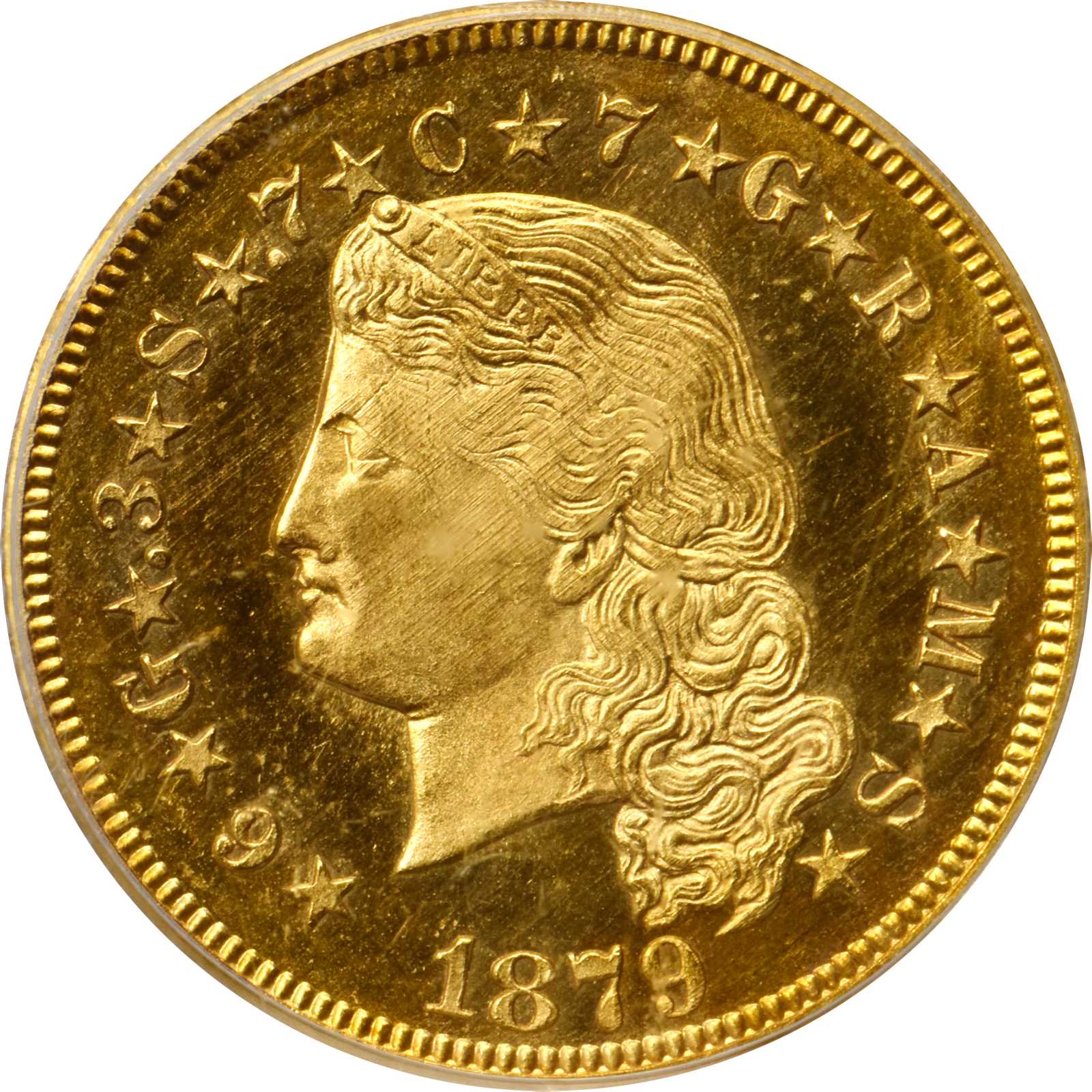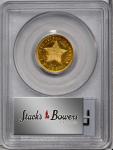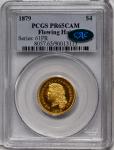1879 Four-Dollar Gold Stella. Flowing Hair. Judd-1635, Pollock-1833. Rarity-3. Gold. Reeded Edge. Proof-65 Cameo (PCGS). CAC.
This outstanding specimen of one of America’s most famous popular rarities will draw bids from all directions as it crosses the auction block. Exquisite Gem Cameo surfaces are smooth and display strong contrast between reflective fields and frosty design elements. Wisps of pale reddish-gold iridescence enhance the attractive, warm rose-orange patina. Sharply struck for the type with outstanding visual appeal.
The dream of integrating the coinage of the United States with the world trading community had been long in the making. For much of the early years of the Republic, coinage policy was primarily focused on domestic ease of use, with only basic consideration given to international trade. As overseas commerce increased over much of the first half of the nineteenth century, especially among European nations, interest in internationalizing Americas precious metal coinage grew. Meanwhile, steps to establish a freely exchangeable monetary standard among the disparate currencies of Europe took shape, finally culminating in the signing of a treaty on December 23, 1865, establishing the Latin Monetary Union that set a bimetallic gold and silver standard at a fixed ratio of 15-1/2 to 1 and using the Napoleonic franc of 1803 as its basis. The Latin Monetary Union was initially between Belgium, France, Italy, and Switzerland, but was soon joined by many other continental European nations. Through the Union, one franc would be the same as one lira, peseta, leva, or drachma and easily exchangeable within the member nations. The Union proved to be successful and lasted until its dissolution in 1927.
At the time of the establishment of the Latin Monetary Union, the United States was still reeling from the devastating effects of the Civil War, as well as the Panic of 1873. Fortunately, the economy proved resilient and by the later 1870s international trade increased at a steady rate. More and more Americans traveled abroad for both business and pleasure and found that the easy convertibility of the various currencies within the Latin Monetary Union made commerce more fluid. This stood in sharp contrast to the difficulty experienced when trying to convert American coins into European currencies.
The stage was set for a wide variety of proposals to bring our monetary standards in line with those of the Latin Monetary Union. Many of these propositions were innovative and garnered some support, but few ever went beyond the concept phase. The political scene in the 1870s was dominated by silver, and three Congressmen in particular, Richard "Silver Dick" Bland of Missouri, William Kelley of Pennsylvania, and John Kasson of Iowa, were especially keen on influencing the debate. It was through Kasson that the concept of the $4 Stella originated.
In 1877, Kasson was appointed by Rutherford Hayes as Envoy Extraordinary and Minister Plenipotentiary to the Austro-Hungarian Empire, where he was exposed to the difficulties in converting American dollars into Austrian florins and back again. When he returned, Kasson used his experiences - as well as influence as past chair of the House Committee on Coinage, Weights, and Measures - and submitted a proposal for a four-dollar coin that would be closer in weight to the Austro-Hungarian 8 florin piece, which was equivalent to the French 20 franc coin. In addition, Kasson recommended that the four-dollar gold piece be minted in an unusual metric gold alloy of 85.71% gold, 4.29% silver and 10.00% copper inspired by a similar silver alloy called "goloid" patented by Wheeler W. Hubbell of Pennsylvania. Kasson took his plan to the current Coinage Committee chairman (and former Confederate vice president), Alexander Stephens who in turn, wrote to Secretary of the Treasury John Sherman requesting that the Mint prepare patterns of the denomination for Congressional evaluation.
Two designs were prepared, the Flowing Hair design by Charles E. Barber, as here, and the Coiled Hair design by George T. Morgan, both of which became known as Stellas. Despite the intention to produce the pattern Stellas in goloid as expressed by the obverse legend *6*G*.3*S*.7*C*7*G*R*A*M*S*, the coins were almost certainly produced in the standard alloy of 90% gold and 10% copper, though so far as known no Stella has been subjected to analysis to prove this assertion. On the reverse is the prominent large five-pointed star from which the coin earned its moniker and the denomination expressed three ways: ONE STELLA, 400 CENTS, and FOUR DOL. While most consideration was focused on the $4 gold piece, $20 "Quintuple Stella" patterns were also prepared along with metric silver and goloid dollars.<p>Barbers Flowing Hair design was the first selected for production and an estimated 25 - though this may be a few as 10 to 15 - three-piece pattern Proof sets were prepared. These sets were distributed to Congressional leaders who took a liking to the unusual coins. Other government officials who encountered the coin pressed the Mint for more examples. To satisfy the demand, the Mint struck more examples in 1880 but all bearing the 1879 date. The precise number struck remains unclear, ranging from the traditionally quoted figure of 425 pieces to some estimates as high as 800 coins. Despite the interest in the coin, the denomination never received enough Congressional support to proceed with regular full-scale production. The denomination had no exact European counterpart, was an unusual denomination, and seemed to have no real specific commercial use. Despite having never entered use in normal commerce, the coins have long been included as key to a type collection of United States gold, thanks in no small part to inclusion in the "Red Book."
Stellas were all struck as Proofs, but because many of the remaining coins ended up as pocket pieces or set into jewelry, they often appear as if they have seen very heavy circulation. Many are damaged with filed rims, scratches, and wear commensurate with long service in necklaces. The present coin is a noteworthy exception. Carefully preserved through the years with not even the barest signs of any handling, this Gem Mint State Stella would be an impressive numismatic achievement for any advanced cabinet.

